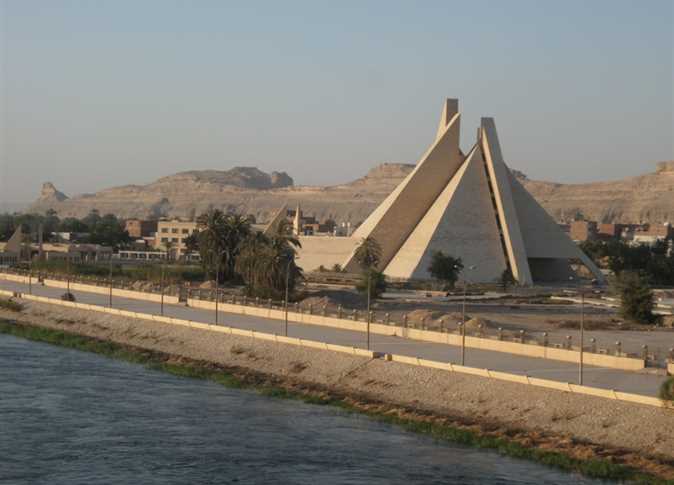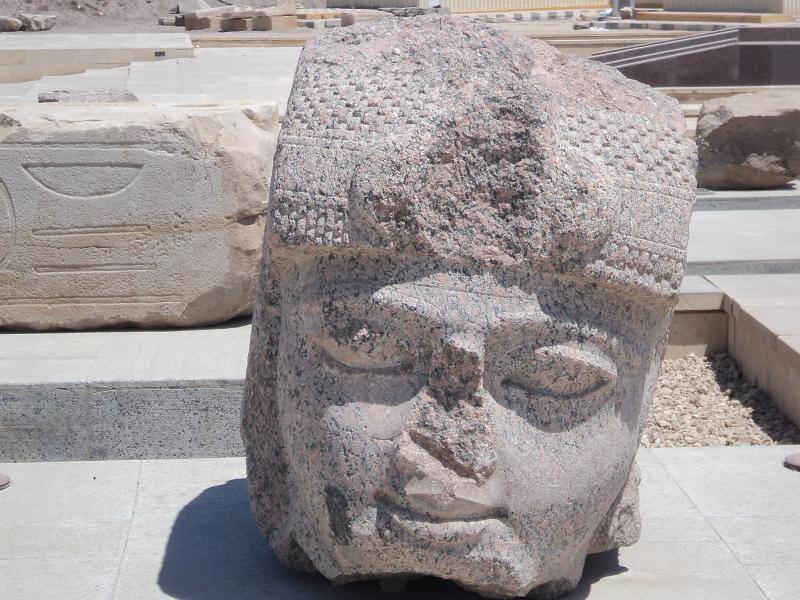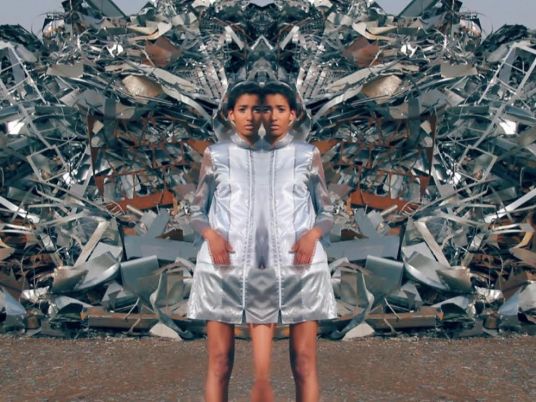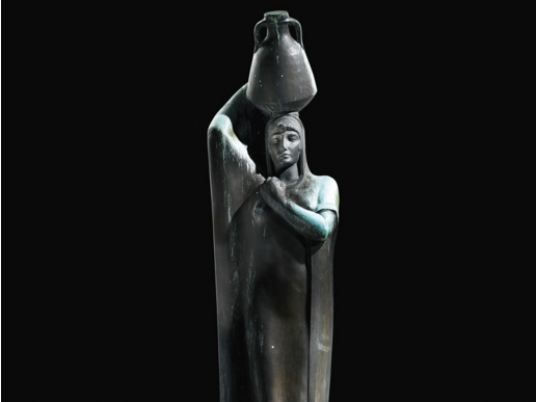Inji Aflatoun is a painter whose art is difficult to separate from her politics. But Aflatoun’s ideology and fighting spirit enriched her work, and her work, in turn, enriched her activism. Her paintings were about Egypt, Egyptian people, and very often their suffering, infused with an emotional immediacy that maintains its strength to this day.
Aflatoun, once at odds with the Egyptian state, now has her own dedicated permanent exhibition organized by the Culture Ministry, in a small corridor of Amir Taz Palace, in the Khalifa district. The exhibition, which opened to the public on 18 August, includes a broad selection of her work, from her earliest paintings to those made in the last years of her life.
Aflatoun (1924 – 1989) was at the vanguard fighting for women’s rights in Egypt in the 1940’s and 50’s, and was also a devoted Marxist, carrying themes of labor and collective action throughout her painting. As an artist and activist, she split her energies evenly between both, favoring painting over activism only in her later life. Though her paintings carry socialist and feminist themes, they emphasize humanity over didactic service to a cause.
For those not familiar with Aflatoun’s work, this exhibition, selected from a larger collection of Aflatoun’s paintings in state possession, provides an excellent introduction. Arranged chronologically, it highlights the dramatic stylistic changes her painting underwent throughout her life.
The earliest work in the collection, “The Girl and the Beast,” displays the surrealist influence of her early teacher Kamel al-Telmissany, a leader in an Egyptian Surrealist collective called the Art and Freedom Group. It also showcases Aflatoun’s emerging formal and conceptual interests: heavy strokes of dramatic color and subjects that expose the challenges of life as an Egyptian woman.
Aflatoun’s radical politics made her a target during Gamal Abdel Nasser’s crackdown on Communists after the 1952 revolution, and in 1959 she was one of a group of women activists who became Egypt’s first female political prisoners. The four-and-a-half years she spent in prison are significant in her biography, in part because the experience raises her profile as brave and fighting dissident, but also because she managed to paint throughout most of her incarceration. Works painted while Aflatoun was in prison are particularly well represented in the collection at Amir Taz Palace.
These paintings display her graphic sensibilities as she employs striped prison uniforms and iron bars to create dynamic and expressive images, and depicts women stacked on top of one another in prison barracks to striking visual and emotional effect.
In “Behind the prison walls,” a woman in a striped jumper clings to the bars of her cell, staring mournfully at the viewer. It is a moving image, but perhaps even more painfully poignant is Aflatoun’s “A night behind jail bars” that depicts the prison court yard, serene and empty under a rising moon and rustling trees. It is an idyllic night scene, but thick metallic prison bars slash through the image, underlining the confinement of the painter herself.
In her work before and during imprisonment, Aflatoun employed bright, vibrant colors, but with a heavy hand. Upon her release, she began to leave a little space between her brush strokes, allowing her paintings, as she said in an interview for the NWSA Journal – now the Feminist Formations – in 1989, to “vibrate.”
This transformation is striking. Because the exhibition is arranged in a long, narrow corridor, her heavily painted early work hangs across the wall from later pastoral scenes, lightly pieced together by splotches of color on a bright white canvas.
“Since 1974, I took courage in my two hands to enter a new adventure. I used to leave some white between brushstrokes for vibration. Little by little I discovered if I leave more white, it helps,” Aflatoun told NSWA Journal.
Aflatoun’s paintings often depict the hard labors of the working class, particularly the female working class. But her work does not carry the triumphant tone of similarly themed work from, for example, her ideological kin in the Soviet Union. She shares more with the German Expressionist printmaker Käthe Kollwitz, who depicted workers strife in bitingly emotional, dark imagery of death, pain and struggle.
Kollwitz was once quoted saying, “All middle-class life seemed pedantic to me. On the other hand, I felt the proletariat had guts.”
Those people with guts also sparked Aflatoun’s interest, and she was plenty gutsy herself.
The exhibit at Amir Taz Palace seeks not only to present Aflatoun’s paintings, but also to educate about her life. For any artist whose life is filled with such drama, posterity often does not separate between the personal story and the work. This is the case in the exhibition at Amir Taz, but it does not distract from the paintings themselves.
Several large wall texts detail various aspects of Aflatoun’s life (in Arabic and English), and two long display cases feature photographs of the artist at work and at openings, along with magazine and newspaper clippings about her various exhibitions, a pile of pallets and brushes she used, and a wide range of other small personal artifacts.
Aflatoun’s work buzzes with life and emotion, even in its darkest iterations. This collection marks an exciting, if small, addition to Cairo’s modern art offerings, and in providing a venue to learn about and understand a great artist, it also opens up a chapter of Egypt’s turbulent mid-century history.
Inji Aflatoun’s paintings are on permanent display from 10:00 to 2:30 and 8:30 to 11 (Ramadan hours) in the Amir Taz Palace, 1127 al-Soyoufeya street off al-Saliba street, al-Khalifa, Cairo. The museum can be contacted at +202 25 14 2581




